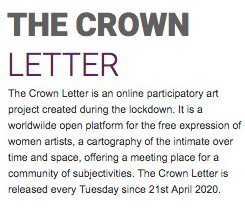Posts in Category: Non classé
Week 189- April 23 to April 30
Valeria Troubina

Natacha Nisic

Week 188 April 16 – April 23
Katja Stuke

Kyung-hwa Choi-ahoi
Emma Woffenden

Week 185 – March 26 April 2
Valeria Troubina

Anne Brunswic
Kasia Ozga

Manuela Morgaine

Neringa Naujokaite

Sudha Padmaja Francis






Am I still allowed to doodle?
Week 184 – March 19 to March 26
Manuela Morgaine
During a war, Tristan, mortally wounded, calls the blonde Yseult to his aid because she alone is capable of healing him. He sets up a code with his men and asks that a white sail be hoisted to the top of the mast of the boat that will bring her back if she agrees to treat him and a black sail if she is not on the boat. The sailors take on board Yseult the blonde, eager to join her beloved, and raise the white sail, but when the boat approaches the coast, Iseult with white hands, his wife, consumed by jealousy, tells Tristan that the sail is black. Believing himself abandoned by the one he loves, he lets himself die. When she arrives at his bedside, Yseult the Blonde, learning of Tristan’s death, dies of grief in his arms. The lovers are dead.
Katja Stuke

Aurelia Mihai

Natacha Nisic
Week 183 March 12 to March 19
Katja Stuke

Emma Woffenden

Kyung-hwa Choi-ahoi

Valeria Troubina

Week 182 – March 5 to March 12
Manuela Morgaine
Emma Woffenden

Valeria Troubina

Kasia Ozga

Found texture, Knight Brown Nature Preserve, Rockingham County, NC.
Week 181 – February 27 to March 5
Valeria Troubina

Manuela Morgaine

Ruth Maclennan

Week 174 – January 9 to January 16
Anne Brunswic

Katja Stuke

Natacha Nisic

Liza Dimbleby

Ruth Maclennan

Valeria Troubina

Week 172 December 20 to December 27
Kasia Ozga

Valeria Troubina

Katja Stuke





